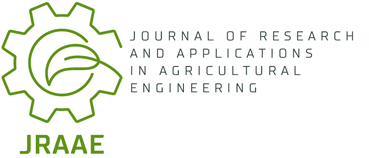Current issue
Online First
Archive
Instructions for Authors
Guide for Authors
Peer Review Policy
Research Ethics Policy
Crossmark Policy
Ghostwriting and Guest Authorship
Copyright
Open Access Policy
Plagiarism
About the Journal
Aim and Scope
Scientific Board
Publisher
Editorial Board
Indexing in Databases
Personal Data Protection
Repository Policy
Contact
ORIGINAL PAPER
The influence of the laser and diffusion boronizing on the surface layer of nodular iron
1
Instytut Maszyn Roboczych i Pojazdów Samochodowych, Politechniki Poznańskiej, Poznań, Poland
Journal of Research and Applications in Agricultural Engineering 2017;62(1):158-162
KEYWORDS
ABSTRACT
Cast irons are commonly used in case of many machine parts in different industry branches, also in agricultural industry. A lot of such machine parts are exposed to tribological wear and corrosion. Therefore, surface layers with improved properties are needed. This paper refers to two different ways of modification of the surface layer of nodular iron. The aim of this research was to compare the effects of the laser boronizing and diffusion boronizing of nodular iron, especially the influence of boron concentration on the hardness of modified surface layer. An optical and scanning electron microscopes, Auger electron spectroscope (AES) and hardness Vickers tester were used to assess the results of the surface layer treatments. The performed research showed, that after diffusion, as well as, after laser boronizing of nodular iron higher hardness of the surface layer (in comparison to the core material) was obtained. Coarse-grained, needle-like shape of iron borides with ferrite grains after diffusive boronizing and very fine-crystalline, homogenous microstructure after laser alloying were observed. Hardness changes measurement from the surface on the cross-section for both cast irons treated with those methods of boronizing were correlated with the registered changes of boron concentration. Nevertheless, this correlation was stronger for diffusion boronizing than for laser modification. Smaller correlation for the zone achieved after laser boronizing is possibly a result of other aspects which influences the hardness and are characteristic for laser treatment like creation of very fine grains or supersaturated solid solutions (unlike diffusion treatment). It was stated, that it is possible to use less alloying element in case of laser treatment to achieve similar hardness to the surface layer after diffusion modification. Higher microstructure fineness and homogeneity, gentle hardness changes on the cross section of the surface layer form the surface to the core material after laser boronizing (in comparison to diffusion boronizing) should favor the wear resistance of machine part as well as be conducive to the selection of this kind of treatment.
REFERENCES (10)
1.
Kośmicki Z., Kęska W., Feder S.: Automatyzacja procesów roboczych maszyn rolniczych. Prace PIMR, Poznań, 2000, Vol. 45, 1, 61.
2.
Łabęcki M., Gościański M., Pirowski Z., Olszyński J.: Badania laboratoryjne i eksploatacyjne wybranych elementów roboczych maszyn rolniczych pracujących w glebie, wykonanych z nowoczesnych żeliw ADI. Część 1: Badania laboratoryjne. Journal of Research and Applications in Agricultural Engineering, 2004, Vol. 49(4), 35.
3.
Łabęcki M.: Badania laboratoryjne i eksploatacyjne wybranych elementów roboczych maszyn rolniczych pracujących w glebie, wykonanych z nowoczesnych żeliw ADI, Część 2: Badania eksploatacyjne. Journal of Research and Applications in Agricultural Engineering, 2004, Vol. 49(4), 41.
4.
Pertek-Owsiana A.: Kształtowanie struktury i właściwości warstw borków żelaza otrzymywanych w procesie borowania gazowego, WPP 2001, Rozprawy nr 365; Przybyłowicz K.: Teoria i praktyka borowania stali, WPŚ 2000.
5.
Praca zbiorowa pod red. A. Barbackiego: Metaloznawstwo dla mechaników, WPP Poznań 1995; Burakowski T.: Inżynieria powierzchni wczoraj, dziś i jutro. Inżynieria powierzchni, 1996, 1, 3-10.
6.
Sen U., Sen S., Yilmaz F.: Structural characterization of boride layer on boronized ductile irons. Surface & Coatings Technology, 2004, 176, 222-228.
7.
Paczkowska M.: The evaluation of the influence of laser treatment parameters on the type of thermal effects in the surface layer microstructure of gray irons. Optics and Laser Technology, 2016, 76, 143-148.
8.
Paczkowska M., Ratuszek W., Waligóra W.: Microstructure of laser boronized nodular iron. Surface & Coatings Technology 205 (2010), 2542-2545.
9.
Paczkowska M.: Możliwości modyfikacji struktury i własności warstwy powierzchniowej elementów maszyn przez borowanie laserowe. Inżynieria Materiałowa, 2008, 6, 585-590.
10.
Paczkowska M., The Possibility of Selected Surface Layer Modification of Nodular Iron Engine Parts by Laser Boronizing, Vehicle Engineering (VE). Science and Engineering Publishing Company, September 2013, 1(3), 64.
Share
RELATED ARTICLE
We process personal data collected when visiting the website. The function of obtaining information about users and their behavior is carried out by voluntarily entered information in forms and saving cookies in end devices. Data, including cookies, are used to provide services, improve the user experience and to analyze the traffic in accordance with the Privacy policy. Data are also collected and processed by Google Analytics tool (more).
You can change cookies settings in your browser. Restricted use of cookies in the browser configuration may affect some functionalities of the website.
You can change cookies settings in your browser. Restricted use of cookies in the browser configuration may affect some functionalities of the website.


